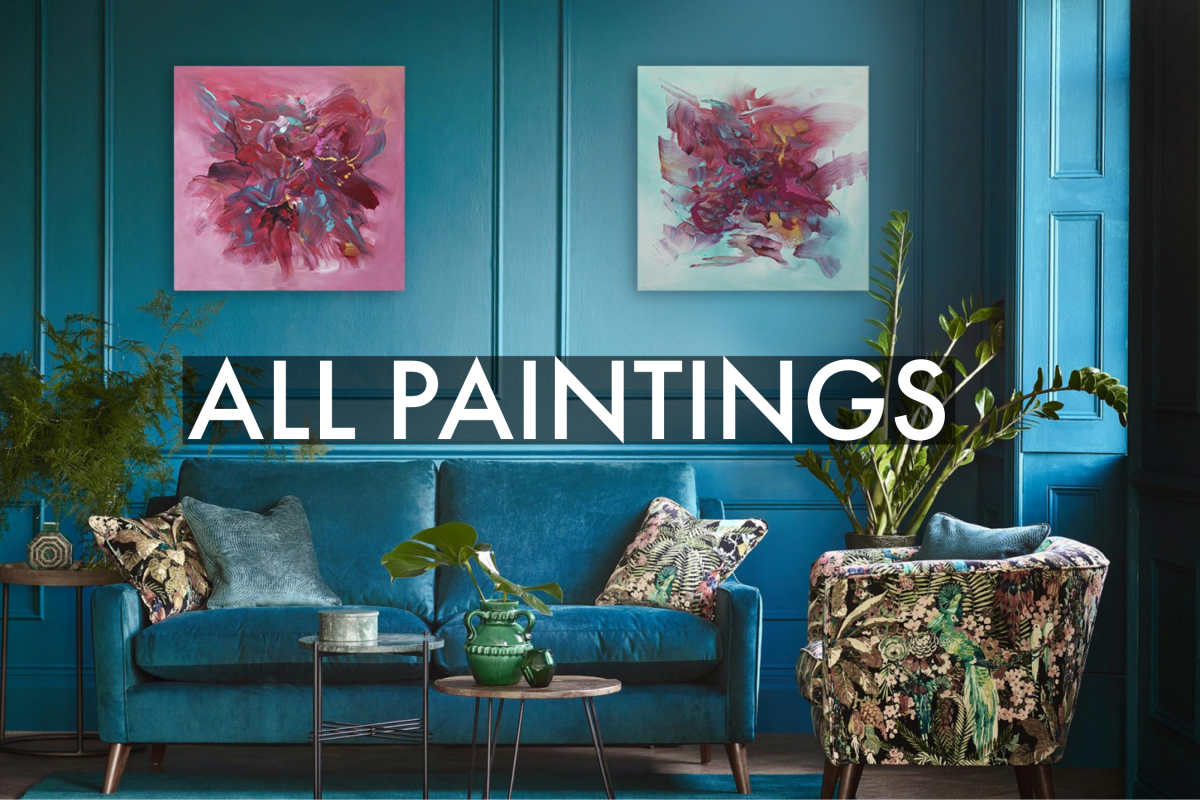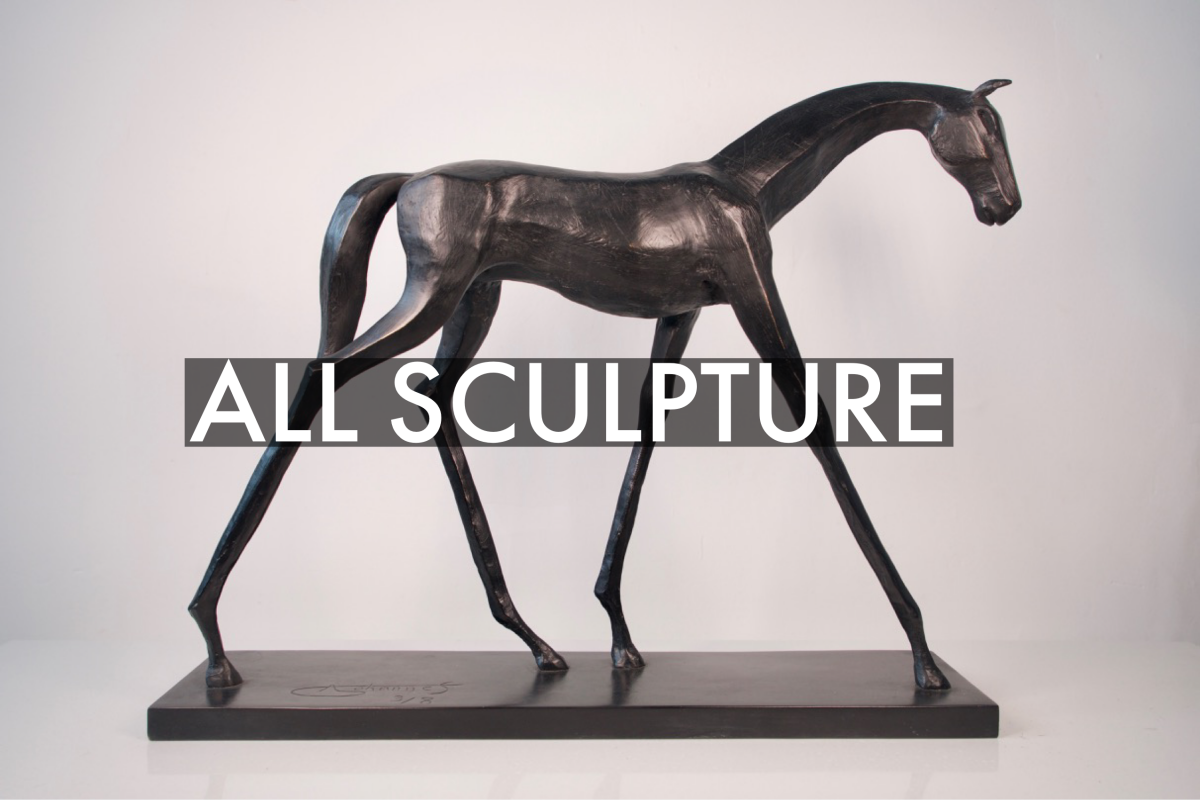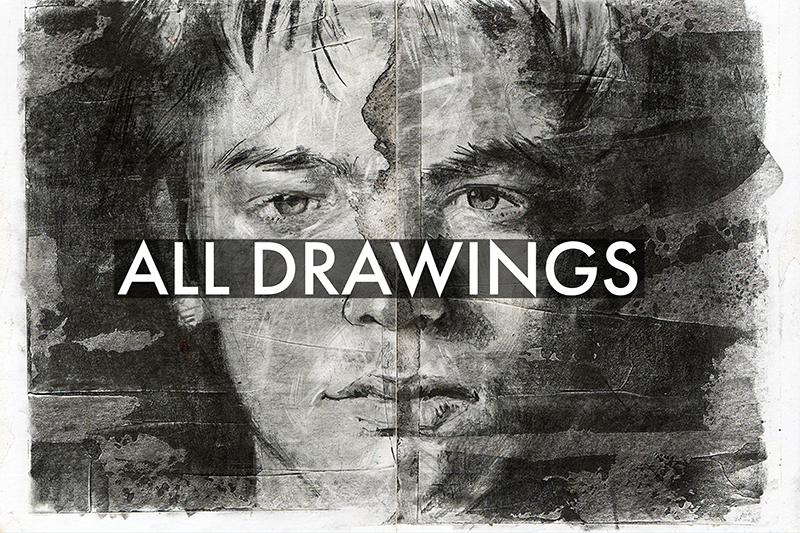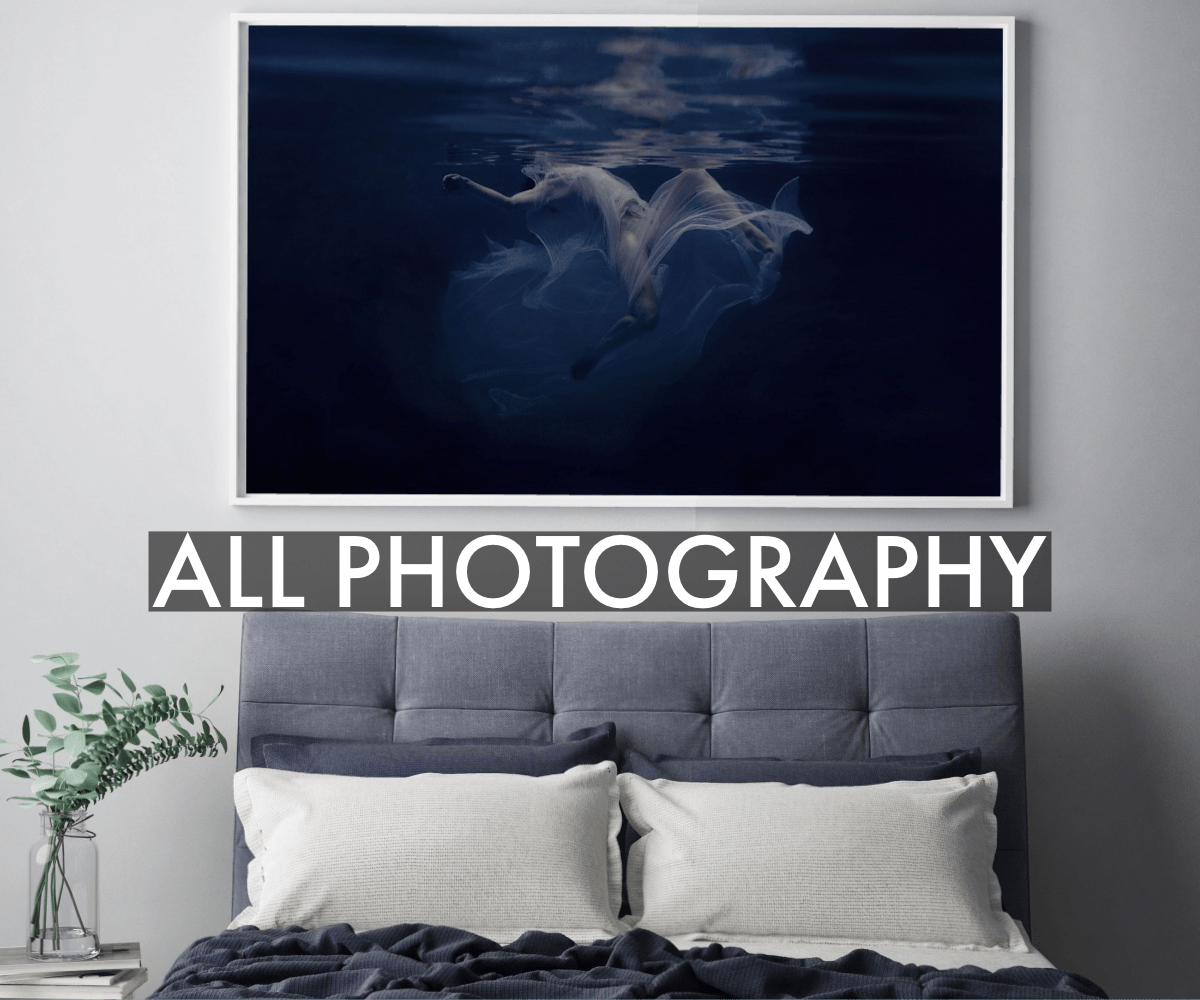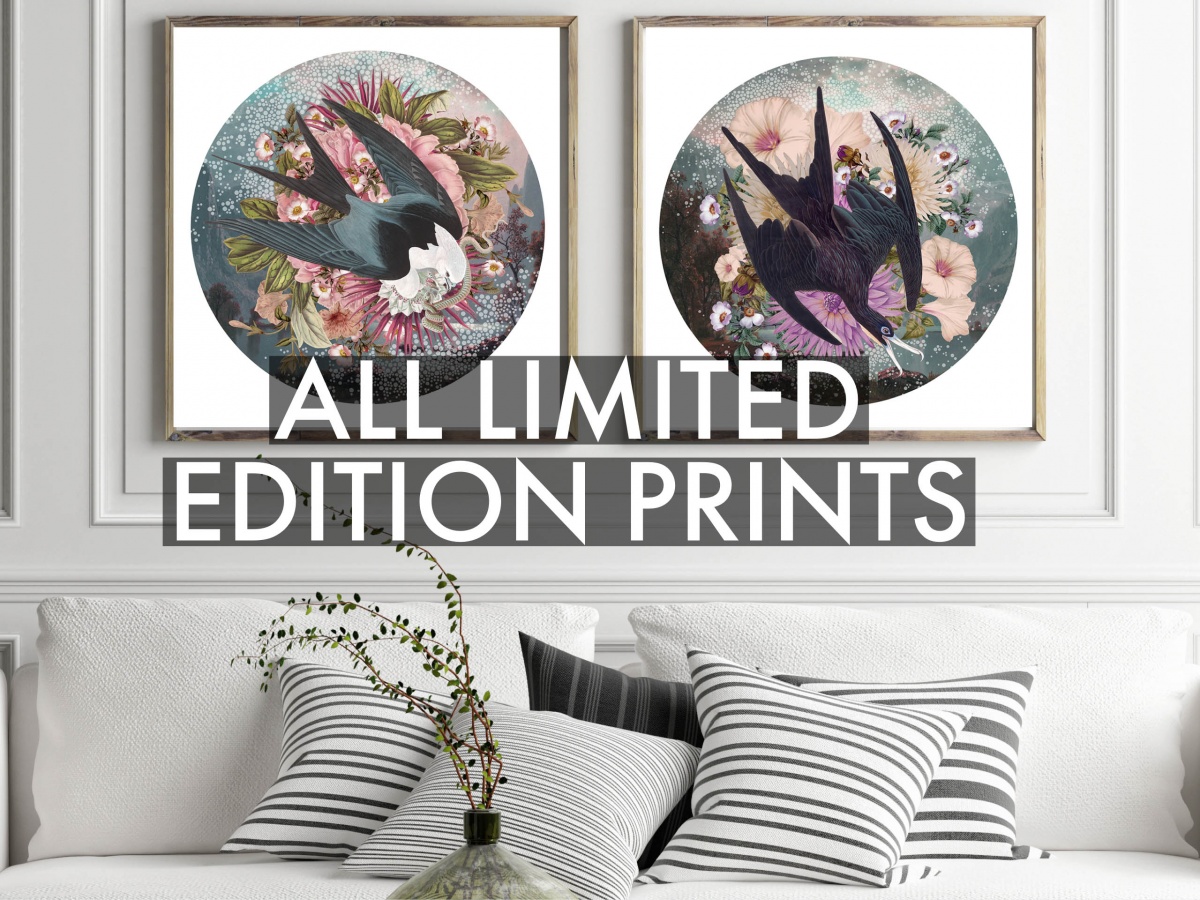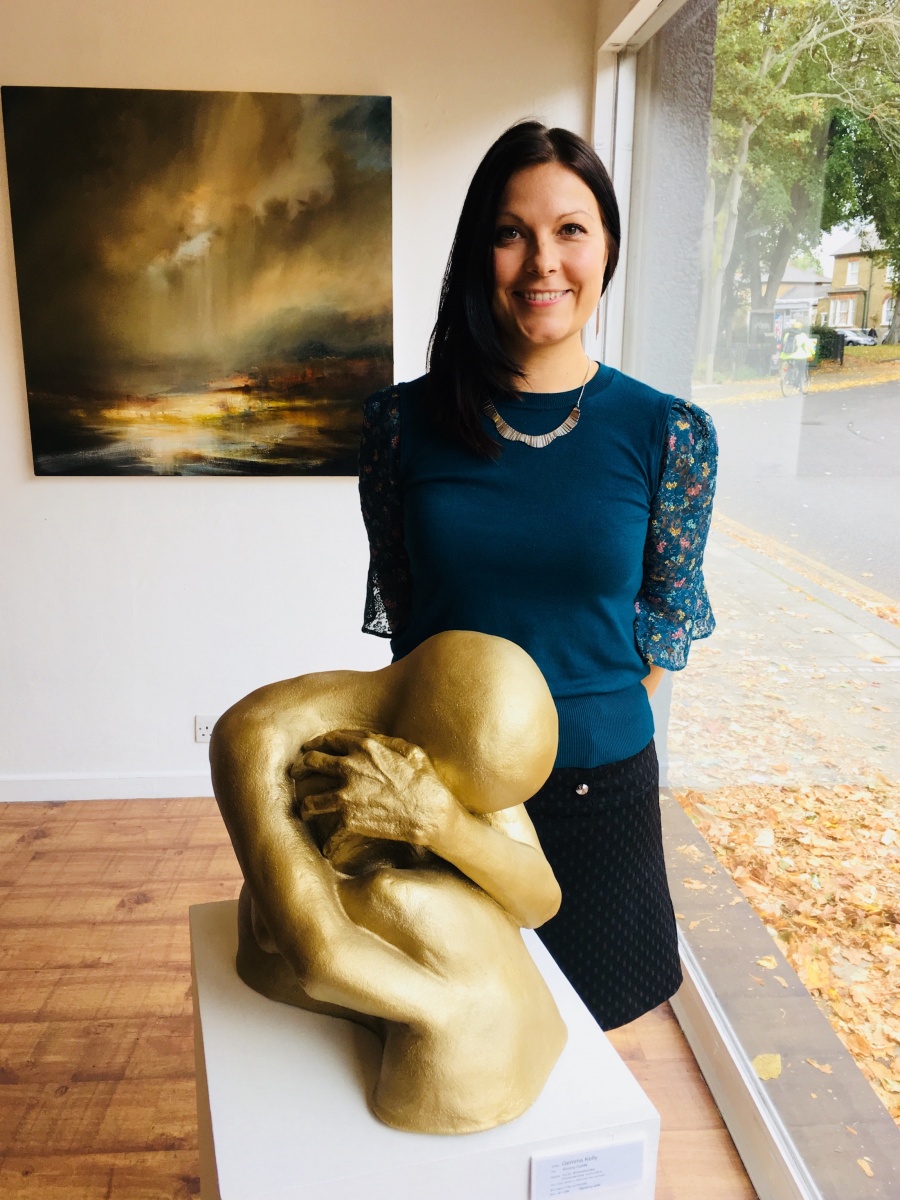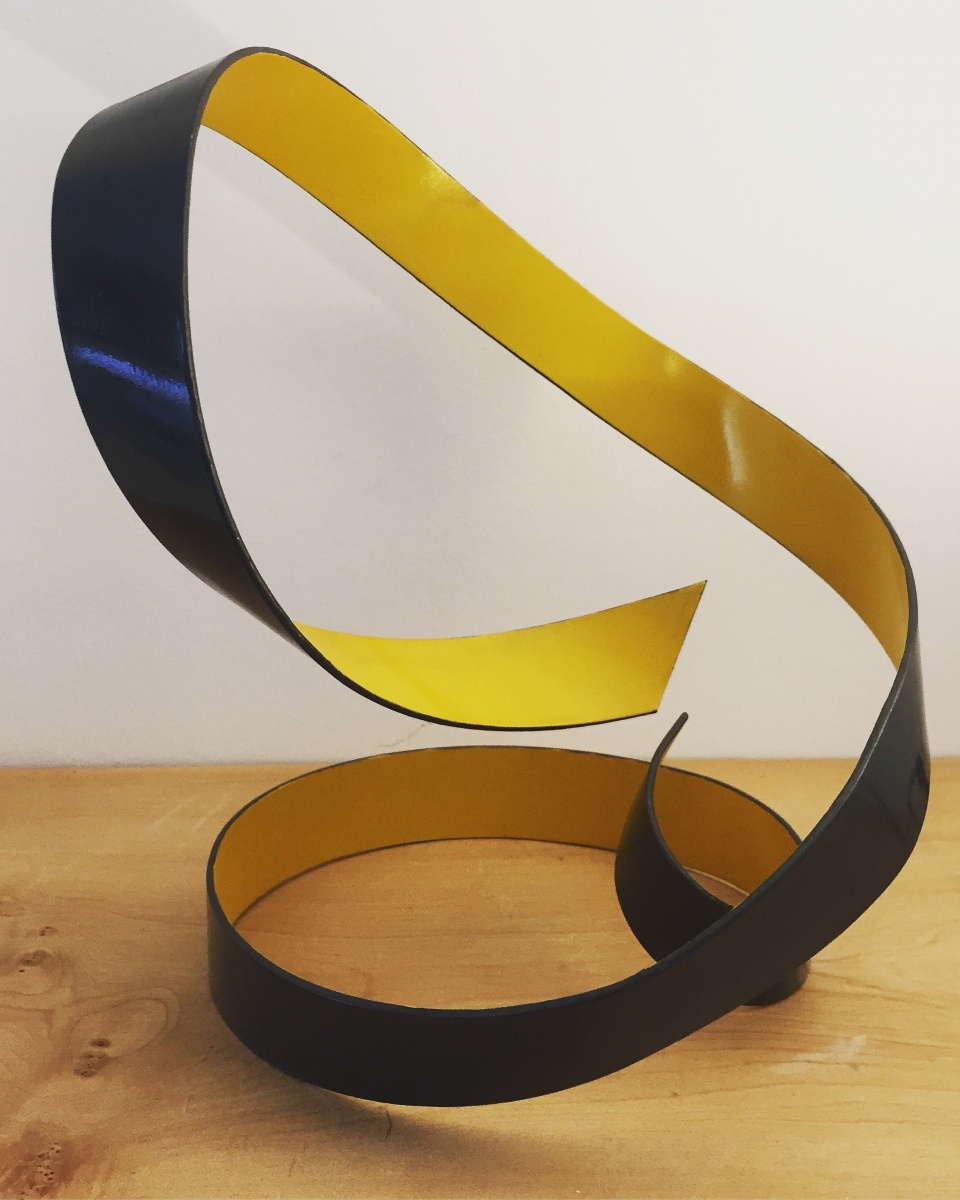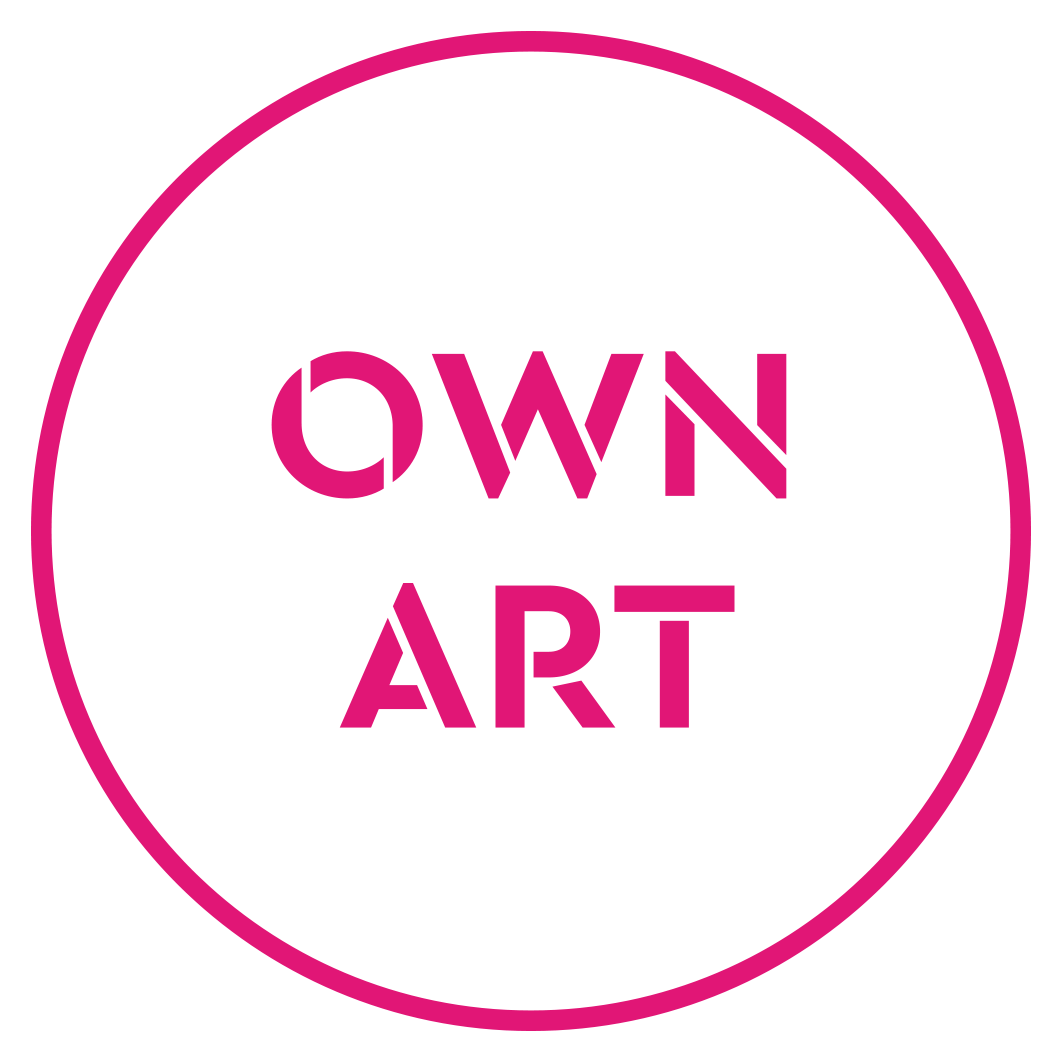Gemma Kelly is a new artist on Contemporary Collective. Her emotionally expressive sculptures can be both playful and confronting: from abstracts that draw on the aesthetic joys of dance, to human bodies that reveal pain and sorrow in their taught sinews and stressed limbs. Much of her work draws on personal experiences that she expresses boldly and without compromise, inviting the viewer into a world that is usually kept hidden and internal. She works mainly in clay and metals, but is equally happy to use any materials that will help realise her ideas. She has sold many pieces privately, and they can be found in many different homes and gardens around the country. She will also take on commissions (the more challenging the better) but as she says, “Ultimately I make for the love of making and sculpt for the love of sculpting.”
1) Which art movement do you consider most influential on your practice?
Modernism/Expressionism
2) Where do you go and when to make your best art?
I think I make my best work when I am isolated from the world and can fully explore and consider what I am doing. This is not to say I want to be isolated from the world in general. Quite the opposite. But it means that at the moment of creation, in order to fully turn my thoughts and experiences into sculptures, I want to be isolated from outside interferences and give my imagination space to roam. What this means in practise is going into my studio and literally wearing ear defenders to block out external noises and distractions.
3) How do you describe your 'creative process'?
I look closely at people’s bodies (hopefully without them noticing) so that I am able to recreate them from memory. I am especially interested in the different shapes and contortions in people’s bodies as they have different experiences (from joy to despair). I am most inspired when I see something in the sinews and contours that can be translated into an expressive piece of sculpture. I also try to translate my own emotions and experiences into a single ‘position’ or ‘moment’ that can convey those feelings. These positions or moments are built from the combination of surfaces, textures, lines and curves that can be found in both my figurative and abstract works. For me, it is all about the process of making. It is rarely about the final piece, which is almost just a way of showing what I have been inventing in my head. I always document the process in great detail, as the creative steps are as much part of the sculpture to me as the final realisation.
4) Which artist, living or deceased, is the greatest inspiration to you?
Kathe Kollwitz is definitely my greatest inspiration. To me she captures emotions, such as grief, so closely and painfully that experiencing her work can be visceral. Her pieces sometimes use abstractions, but they are abstractions that capture fine grained detail. For example, if it is a mother's grief she is expressing, then the grief expressed in her work is a mother's grief, not just grief in general.
5) If you weren't an artist, what would you do?
Psycho-therapy, perhaps as an art psycho-therapist. It would be a way of using the empathy and understanding that is also driving my work as an artist.
6) What do you listen to for inspiration?
I love music, and the spoken word. But I do not listen to anything for inspiration. It is in moments of silence that I find inspiration.
7) If you could own one artwork, and money was no object, which piece would you acquire?
I love the work of Bill Viola. All those bodies in slow motion...
8) If your dream museum or collection owner came calling, which would it be?
MoMA
9) What is your key piece of advice for artists embarking on a fine art or creative degree today?
Make sure you take the time to learn a skill whilst exploring your most creative ambitions.
10) What is your favorite book of all time (fiction or non fiction)?
Captain Underpants because of the way it makes my son laugh.
11) If you could hang or place your artwork in one non traditional art setting, where would that be?
A maternity ward because its a place of high emotion and drama wrought on people's bodies.
12) What was the biggest lesson your university course or time studying taught you?
To use all the time available that you have in the studio. It's a luxury that is harder to come by when you leave.
13) And finally, if we were to fast forward 10 years, where would we find you?
Outside, making a huge sculpture where no one expects it to be.

